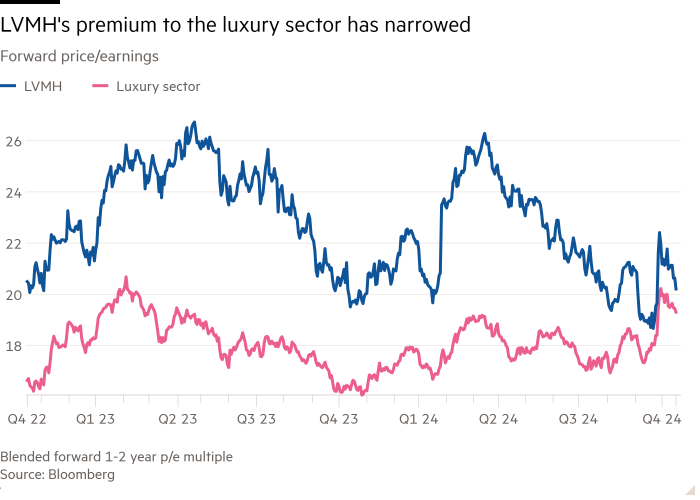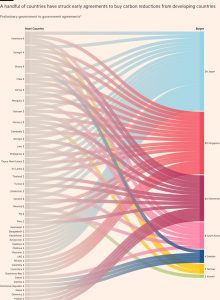This luxury capitulation has barely begun

Unlock the Editor’s Digest for free
Roula Khalaf, Editor of the FT, selects her favourite stories in this weekly newsletter.
The business of luxury is seduction. The aesthetics, the textures, the aura of exclusivity all conspire to turn savvy customers into true believers. That logic is not supposed to apply to hard-nosed investors. Yet their approach to the sector also veers into blind faith.
See, for instance, the market’s reaction to LVMH’s — horrible — sales figures. The luxury juggernaut’s key fashion and leather goods business, which includes brands such as LV and Dior, was down 5 per cent in the third quarter as the Chinese consumer finally capitulated. That points to a much sharper slowdown than feared.
Yet investors greeted this with surprising aplomb. Indeed, the main shock over Wednesday’s mini luxury sell-off was just how mini it was. Competitors were down a couple of percentage points. And LVMH itself fell less than the magnitude of cuts to forecast earnings. Indeed, at 21 times next year’s earnings, the group’s valuation is not far off from mid-cycle multiples of 23 to 24 times, according to Thomas Chauvet at Citigroup. The market, it seems, sees this as a classic macro downturn — and one that will soon reverse.
That is rich. It assumes that China’s as-yet-hazy stimulus programme will rapidly feed through into higher consumption. Analysts, for instance, are pencilling in mid-single-digit sales growth for LVMH next year.
More worryingly, it is by no means clear that, when the macro drag eventually clears, the luxury sector will seamlessly return to rapid growth. Successive price rises may have turned some customers off. In an era of fantastically chic but not terribly exciting “quiet luxury”, there are also murmurs about product desirability.
That leaves the luxury sector as a whole exposed to further disappointments. True super-premium companies such as Hermès and Ferrari — impervious both to macro and fashion cycles — should be relatively sheltered. Brands such as Prada/Miu Miu, which have recently found favour with consumers, might be cushioned from the worst of the impact.

LVMH is not in this camp. The group’s heft has traditionally been an advantage, enabling it to invest in talent, marketing and real estate. But momentum at LV and Dior has been relatively weak, suggests a Bernstein analysis of brand desirability. It may not help that the group is in the midst of a creative and managerial transition, which will take time to gain traction.
LVMH’s premium to the sector has compressed from about 40 per cent in March to about 6 per cent today, on Bloomberg numbers. The luxury sector is a long way from regaining its swagger. And LVMH, unusually, has work to do itself to recover its shine.
#luxury #capitulation #barely #begun




